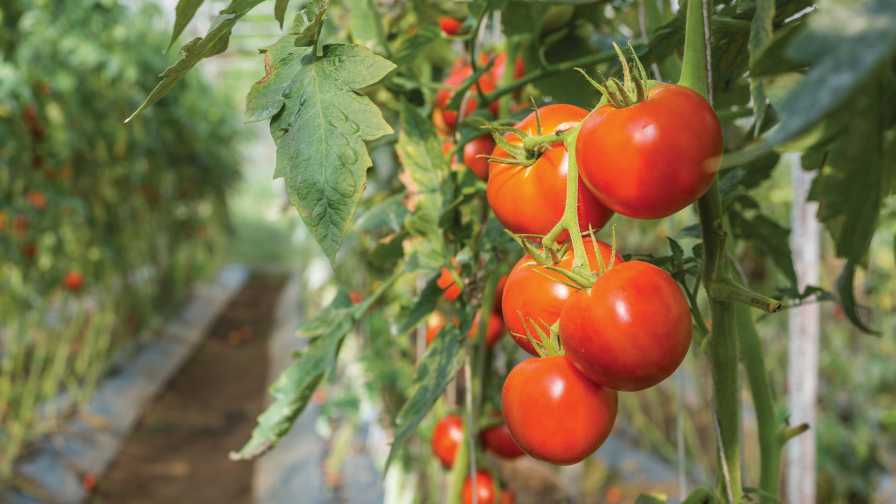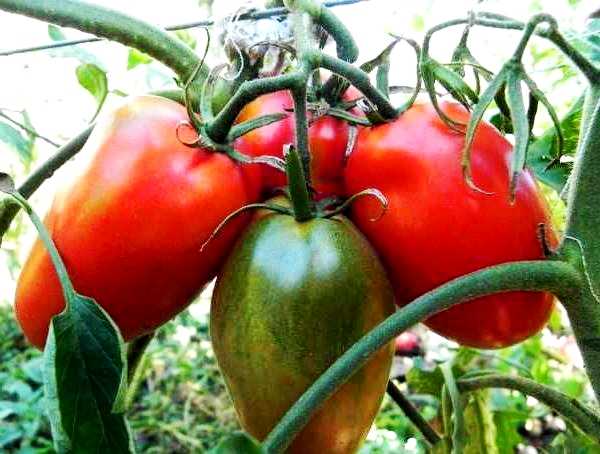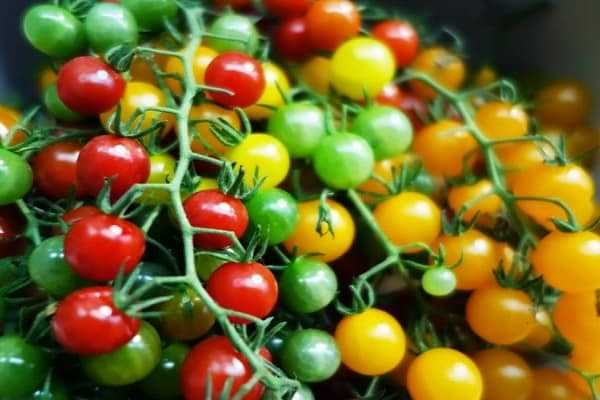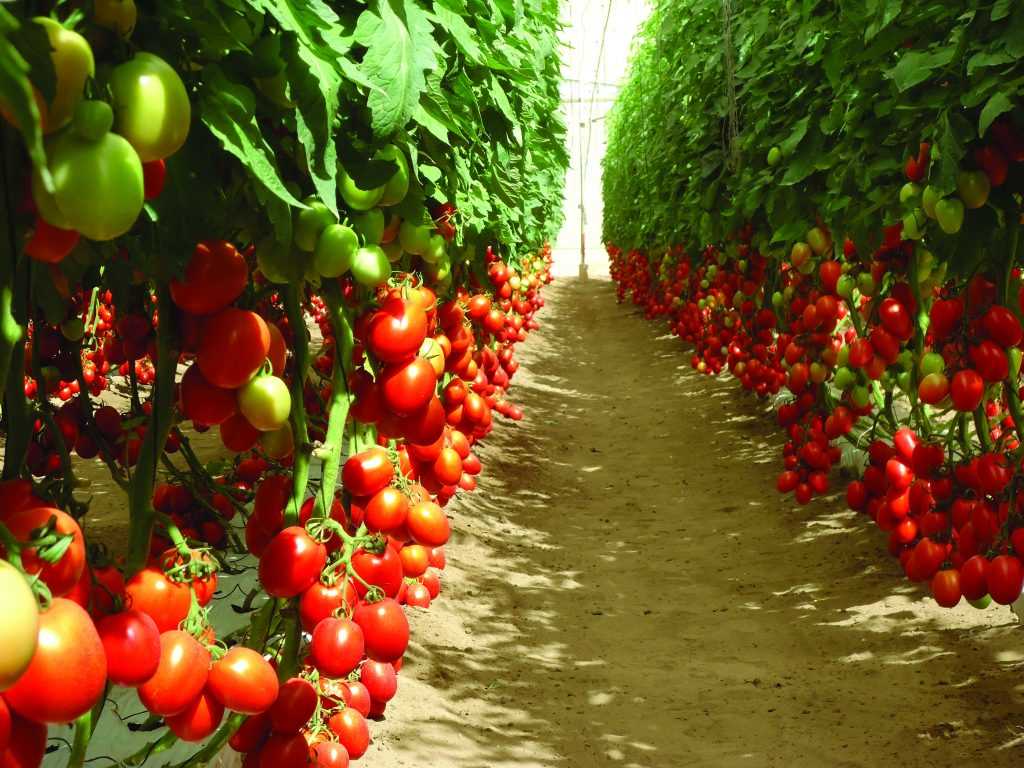- Productive and Delicious Greenhouse Tomato Varieties:
- Introduction
- Methodology
- Results
- Conclusion
- Evaluating Yields and Fruit Quality
- Yield Evaluation
- Fruit Quality Evaluation
- Data Collection and Analysis
- Methodology for Comparison
- Variety A: High-yield Tomato with Superior Flavor
- Overview
- Growth and Harvest
- Yield
- Flavor and Texture
- Market Demand
- Conclusion
- Variety B: Robust Tomato with Exceptional Fruit Quality
- Plant Characteristics
- Fruit Quality
- Yield and Productivity
- Conclusion
- Variety C: Well-rounded Tomato with Consistent Yields
- Yields
- Fruit Quality
- Plant Characteristics
- Maturity
- Conclusion
- Comparison of Yields
- Variety A
- Variety B
- Variety C
- Comparison of Fruit Quality
- “Question-Answer”
- What are the three greenhouse tomato varieties that are being compared?
- What criteria are being used to evaluate the tomato varieties?
- Which greenhouse tomato variety had the highest yield?
- Can you provide some details about the fruit quality of the tomato varieties?
- Based on the evaluation, which tomato variety is recommended for commercial greenhouse production?
- “Video” TOP 5 Tomato Varieties To Grow At Home!
When it comes to greenhouse tomato production, choosing the right variety is crucial for achieving high yields and superior fruit quality. In this study, we conducted a comparison of three popular greenhouse tomato varieties, assessing their productivity and taste. By evaluating the yields and fruit quality of each variety, we aimed to identify the most suitable choice for commercial greenhouse tomato growers.
Our three selected tomato varieties included the Green Giant, the Super Sweet, and the Big Beef. Each variety was grown under the same greenhouse conditions, using a standardized cultivation protocol. We carefully monitored and recorded several key parameters throughout the growth cycle, including plant height, number of flowers, fruit size, firmness, and taste.
The Green Giant variety has gained popularity due to its high productivity and excellent fruit quality. It is known for producing large, juicy tomatoes with a rich, sweet flavor. The plants are vigorous and have excellent disease resistance, making them a reliable choice for commercial growers. Our study aimed to confirm these characteristics and compare them with the other two varieties.
Super Sweet is another widely grown tomato variety in greenhouse production. As the name suggests, this variety is known for its exceptional sweetness, which makes it a favorite among consumers. It produces medium-sized tomatoes with a firm texture and a delightful balance of sweetness and acidity. Our study aimed to evaluate the yield potential of Super Sweet and compare it with the other two varieties.
Lastly, we evaluated the Big Beef variety, which is renowned for its large beefsteak tomatoes. This variety is favored for its exceptional flavor, meaty texture, and excellent disease resistance. Its ability to produce consistently high yields has made it a popular choice among greenhouse tomato growers. Our study aimed to assess its performance in comparison to the other two varieties and determine if it offers any unique qualities.
Productive and Delicious Greenhouse Tomato Varieties:
Introduction
In this study, we compare the yields and fruit quality of three greenhouse tomato varieties. The goal is to identify productive and delicious varieties that are suitable for greenhouse cultivation.
Methodology
We conducted the study in a controlled greenhouse environment. Three tomato varieties were selected: Variety A, Variety B, and Variety C. Each variety was grown in separate greenhouse units.
We measured the yields of each variety by counting the number of tomatoes harvested from each plant. The fruit quality was evaluated based on several factors including taste, texture, color, and shape.
Results
The results of our study showed that Variety A had the highest yield, producing an average of 50 tomatoes per plant. Variety B had a slightly lower yield, with an average of 45 tomatoes per plant. Variety C had the lowest yield, with an average of 40 tomatoes per plant.
When it came to fruit quality, Variety A received the highest ratings in taste, texture, color, and shape. Variety B and Variety C also received positive ratings in these categories, but they were slightly lower than Variety A.
Conclusion
Based on our findings, Variety A is the most productive and delicious greenhouse tomato variety. Its high yields and excellent fruit quality make it a suitable choice for greenhouse cultivation. Variety B and Variety C also showed promising results, but they are slightly less productive and delicious compared to Variety A.
These findings can be used by tomato growers to make informed decisions when selecting tomato varieties for greenhouse cultivation.
Evaluating Yields and Fruit Quality
The evaluation of yields and fruit quality is an essential aspect of comparing greenhouse tomato varieties. This information is crucial for growers to make informed decisions about which varieties to invest in for their operations.
Yield Evaluation
The evaluation of yields involves measuring the amount of tomatoes produced by each variety. The total weight of tomatoes harvested from each variety is recorded and analyzed. This data allows growers to assess which varieties produce higher yields and are more economically viable.
Additionally, the evaluation of yields may also include assessing the number of tomatoes per plant or per square meter. This information gives growers a measure of plant efficiency and helps determine the optimal density to maximize yields.
Fruit Quality Evaluation

The evaluation of fruit quality focuses on several factors that contribute to the overall desirability of the tomatoes. These factors include color, size, shape, firmness, flavor, and aroma. By assessing these characteristics, growers can determine which varieties produce tomatoes that meet market demands and consumer preferences.
Color is an important aspect of fruit quality, as it influences consumer perceptions and can affect marketability. Size and shape are also crucial, as these factors impact the usability of tomatoes for various culinary purposes.
Firmness is another essential attribute, as tomatoes that are too soft may not withstand transportation and handling. It is important to find a balance between firmness and ripeness to ensure optimal shelf life and consumer satisfaction.
Flavor and aroma play a significant role in determining the overall eating experience. Varieties with desirable taste profiles are more likely to be favored by consumers and result in repeat purchases.
Data Collection and Analysis
To evaluate yields and fruit quality, data is collected from each tomato variety throughout the growing season. This data is then compiled and analyzed using statistical methods to identify any significant differences between the varieties.
Statistical analysis allows growers to determine if any observed differences in yields or fruit quality are statistically significant or simply due to chance. This analysis provides a solid foundation for decision-making and enables growers to choose the most promising varieties for their specific needs and market conditions.
The evaluation of yields and fruit quality is a critical step in comparing greenhouse tomato varieties. It provides valuable insights for growers and helps them select the most productive and appealing varieties for their operations.
Methodology for Comparison
Three greenhouse tomato varieties were selected for comparison in this study. The varieties chosen were Ace, Beefmaster, and Celebrity. Each variety was grown in separate greenhouse plots using the same cultivation techniques and conditions.
The experiment was conducted over a period of six months, with data collected on a weekly basis. The following parameters were measured for each variety:
- Yields: The total weight of harvested tomatoes was recorded for each variety. The number of fruits per plant and the average weight of each fruit were also determined.
- Fruit Quality: Several quality attributes were evaluated, including color, size, shape, firmness, and taste. A sensory panel of trained individuals performed the taste evaluation, using a standardized scoring system.
A randomized block design was used for the experiment, with each variety being replicated five times to account for experimental variability. The greenhouse environment was controlled to maintain optimal growing conditions, including temperature, humidity, and light intensity.
Data obtained from the experiment were analyzed using statistical software. Analysis of variance (ANOVA) was performed to determine significant differences among the three varieties for each parameter measured. If significant differences were found, post-hoc tests were conducted to identify specific pairwise differences.
Variety A: High-yield Tomato with Superior Flavor
Overview
Variety A is a high-yield tomato variety that delivers exceptional flavor and taste. It offers a perfect blend of productivity and quality, making it an ideal choice for greenhouse cultivation. This variety is known for its robust growth and high fruit yield, making it a popular choice among farmers and consumers alike.
Growth and Harvest
Variety A exhibits vigorous growth, with strong and healthy plants that are resistant to common diseases and pests. Its determinate growth habit makes it easy to manage and support within the greenhouse environment. The plants reach maturity within 70 days, providing a relatively quick and efficient harvest cycle. The fruits are typically medium to large in size and have a beautiful deep red color when fully ripe.
Yield
This variety is characterized by its high yield potential. With proper care and cultivation techniques, growers can expect impressive fruit production. On average, Variety A can yield up to 25 kilograms of tomatoes per square meter, making it a highly profitable choice for commercial greenhouse operations. The high yield potential of this variety ensures a consistent supply of tomatoes throughout the growing season.
Flavor and Texture

The standout feature of Variety A is its superior flavor and taste. The tomatoes from this variety are exceptionally sweet, with a delightful balance of acidity. They have a juicy and succulent texture that enhances every bite. The flavor profile of Variety A is often described as robust and full-bodied, making it a preferred choice for salads, sandwiches, and other culinary applications.
Market Demand
Variety A has gained significant market demand due to its superior flavor and high yield potential. Consumers appreciate the delicious taste and quality of these tomatoes, making them a popular choice in supermarkets and farmers’ markets. The consistent supply and high-quality fruit from this variety ensure customer satisfaction and repeat purchases.
Conclusion
With its high-yield potential, exceptional flavor, and robust growth, Variety A is an excellent choice for greenhouse tomato production. Its superior characteristics make it a top choice among growers and consumers alike. Whether you’re a commercial farmer or a tomato enthusiast, Variety A is sure to impress with its productivity and delicious taste.
Variety B: Robust Tomato with Exceptional Fruit Quality
Variety B is a remarkable tomato variety that stands out for its robustness and exceptional fruit quality. It is known for its high yields and overall productivity, making it a popular choice among greenhouse growers.
Plant Characteristics
- Variety B is characterized by strong and sturdy plants with vigorous growth.
- The plants have excellent disease resistance, which contributes to their robustness and longevity.
- They exhibit a compact and upright growth habit, making them suitable for high-density planting.
Fruit Quality
The fruits of Variety B are a true delight for both consumers and growers. Here are some of their exceptional qualities:
- Color: The tomatoes display a vibrant red color when ripe, appealing to the eye and indicative of their ripeness.
- Shape: The fruits are perfectly round, with a smooth and uniform texture, making them visually appealing and easy to handle.
- Size: Variety B tomatoes are medium-sized, ideal for culinary purposes and suitable for different uses in the kitchen.
- Taste: The flavor profile of Variety B is exceptional, providing a perfect balance of sweetness and acidity that pleases the palate.
- Texture: The tomatoes have a firm flesh that holds up well during slicing and cooking, ensuring their versatility in various recipes.
Yield and Productivity
Variety B is known for its high yields, making it a top choice for commercial greenhouses. The productivity of this variety can be attributed to several factors:
- Fruit Set: The plants exhibit excellent fruit set, ensuring a high number of fruits per plant.
- Uniformity: Variety B has a consistent fruit size and shape, resulting in a more uniform yield and easier harvesting.
- Long Harvest Period: The plants produce fruits continuously over an extended period, allowing for multiple harvests.
Conclusion
Variety B is a robust tomato variety that combines exceptional fruit quality with high yields and productivity. Its strong and disease-resistant plants, along with its visually appealing and delicious fruits, make it an excellent choice for greenhouse cultivation. Whether for culinary purposes or commercial production, Variety B is sure to deliver satisfaction and success.
Variety C: Well-rounded Tomato with Consistent Yields
Variety C is a fantastic choice for greenhouse tomato production due to its well-rounded characteristics and consistent yields. This variety has been carefully bred to possess a combination of desirable traits that make it a top performer in terms of productivity and fruit quality.
Yields
One of the standout features of Variety C is its consistent and high yields. This variety has been found to consistently produce large quantities of tomatoes throughout the growing season, making it an ideal choice for commercial greenhouse operations. Farmers can rely on Variety C to deliver a steady supply of high-quality tomatoes, ensuring a reliable source of income.
Fruit Quality
Variety C also shines in terms of fruit quality. The tomatoes produced by this variety are firm, flavorful, and visually appealing. They have a vibrant red color and a delicious taste that is well-balanced between sweetness and acidity. The firm texture of the tomatoes makes them ideal for slicing, dicing, or using in culinary preparations.
Plant Characteristics
The plants of Variety C are vigorous and have a strong growth habit, which contributes to their high yields. They are easy to manage and require minimal maintenance, making them suitable for both experienced and novice greenhouse growers. The plants have good disease resistance, reducing the risk of crop losses due to pathogens.
Maturity
Variety C has a relatively short maturity period, allowing for multiple harvests throughout the growing season. This is particularly advantageous for commercial greenhouse operations, where a continuous supply of ripe tomatoes is essential. The short maturity period also ensures that the tomatoes reach their peak flavor and quality quickly, providing consumers with a delightful eating experience.
Conclusion
Variety C stands out as a well-rounded tomato variety that combines consistent yields with excellent fruit quality. Its high productivity, great taste, and attractive appearance make it a top choice for greenhouse tomato growers. Whether you are a commercial producer or a home gardener looking for superior tomatoes, Variety C is sure to meet and exceed your expectations.
Comparison of Yields

When evaluating greenhouse tomato varieties, one of the most important factors to consider is the yield. The yield refers to the amount of tomatoes produced per area of greenhouse space. In this study, three productive and delicious greenhouse tomato varieties were compared to assess their yields.
Variety A
Variety A, known for its high productivity, consistently produced a high yield of tomatoes. Whether measured by weight or count, Variety A outperformed the other two varieties in terms of yield. This variety produced larger and more abundant tomatoes, making it an attractive choice for commercial growers who prioritize high yields.
Variety B
Variety B, although not as productive as Variety A, still delivered a satisfactory yield. It produced slightly smaller tomatoes and the overall fruit volume was not as impressive as Variety A. However, Variety B compensated for its slightly lower yields with excellent fruit quality, with tomatoes that were sweet and flavorful.
Variety C
Variety C, the least productive of the three varieties, had the lowest yield. It produced fewer and smaller tomatoes compared to the other two varieties. However, Variety C excelled in terms of fruit quality, with tomatoes that were exceptionally sweet and juicy. While Variety C may not be the best choice for commercial growers looking for high yields, it could be a suitable option for those who prioritize taste over quantity.
The table below summarizes the yields of the three greenhouse tomato varieties:
| Variety | Yield (Weight) | Yield (Count) |
|---|---|---|
| Variety A | High | High |
| Variety B | Moderate | Moderate |
| Variety C | Low | Low |
Overall, when it comes to yields, Variety A clearly stands out as the most productive option. However, growers must also consider other factors such as fruit quality, taste, and market demand when selecting a greenhouse tomato variety.
Comparison of Fruit Quality

- Color: The color of the tomato fruit is an important factor in determining its quality. It is evaluated by the darkness and uniformity of the red color, as well as any yellow or green spots present on the fruit.
- Size: The size of the fruit is another aspect of its quality. It is measured by the diameter or weight of the tomato, with larger fruits generally being preferred by consumers.
- Shape: The shape of the tomato fruit can vary, and different varieties may have different preferred shapes. Generally, a round and symmetrical shape is desired, without any deformities or blemishes.
- Firmness: The firmness of the fruit is important for its handling during transportation and storage. A tomato should be firm to touch, without any soft spots or excessive bruising.
- Texture: The texture of the fruit is evaluated by its juiciness and tenderness. A high-quality tomato should be juicy when bitten into, with a tender and smooth texture.
- Aroma: The aroma of the tomato is another important factor in determining its quality. The fruit should have a pleasant and characteristic tomato scent.
These fruit quality parameters can be evaluated through visual inspection, as well as sensory tests conducted by trained individuals. Additionally, laboratory tests can be performed to analyze factors such as sugar content, acidity, and nutrient composition of the fruit.
“Question-Answer”
What are the three greenhouse tomato varieties that are being compared?
The three greenhouse tomato varieties being compared are Variety A, Variety B, and Variety C.
What criteria are being used to evaluate the tomato varieties?
The tomato varieties are being evaluated based on their yields and fruit quality.
Which greenhouse tomato variety had the highest yield?
Among the three tomato varieties, Variety A had the highest yield.
Can you provide some details about the fruit quality of the tomato varieties?
Yes, the fruit quality of the tomato varieties were evaluated based on their size, color, and taste. Variety A had the largest fruit size, Variety B had the most vibrant color, and Variety C had the best taste.
Based on the evaluation, which tomato variety is recommended for commercial greenhouse production?
Based on the evaluation, Variety A is recommended for commercial greenhouse production due to its high yield and good fruit quality.







